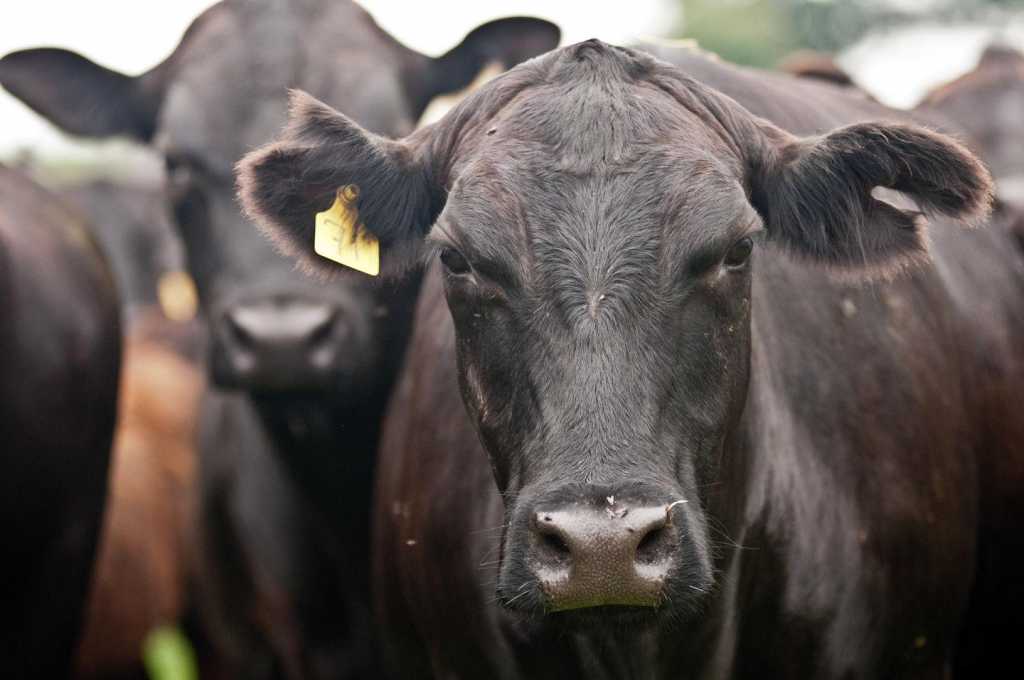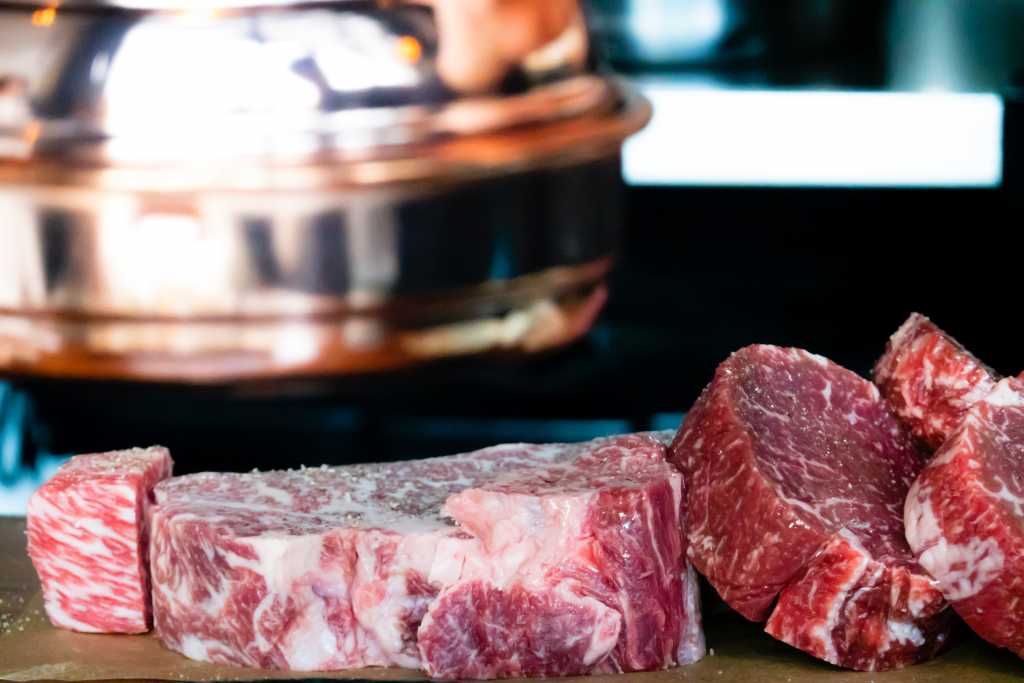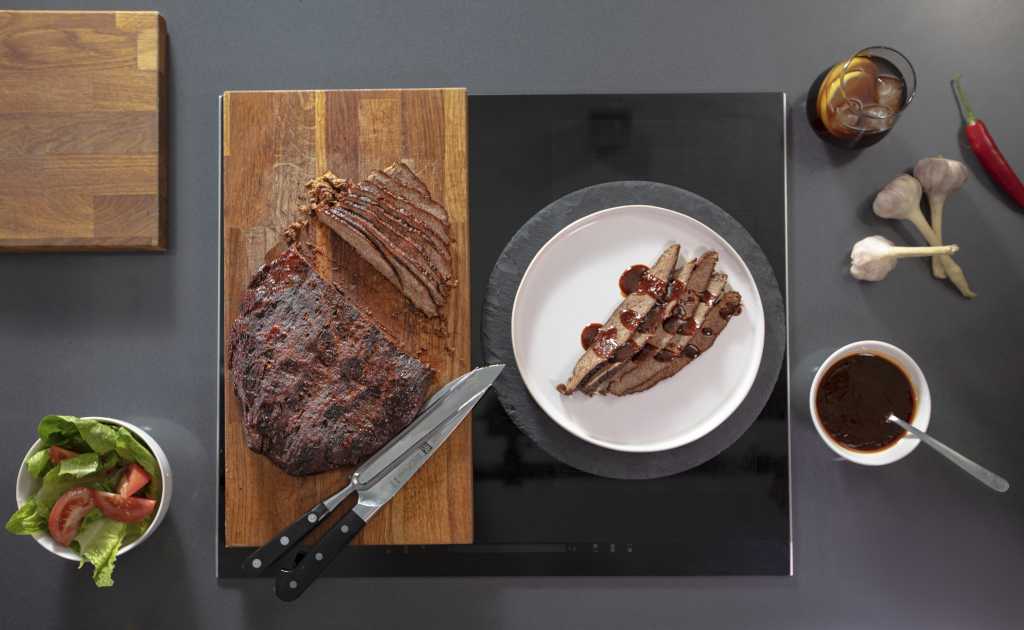Raised and Grazed in the USA
Pasture landscape as far as the eye can see – from Montana and Wyoming in the North to Texas in the very South, the United States is blessed with wide open space and rich farmland. This is the ideal environment for the production of feed grain, which is essential for the U.S. cattle being raised.
Cattle in the United States spend most of their lives grazing on endless pastures which is often referred as “prairie”. It is only for the last 120-150 days before slaughter that they are moved to special feedlots where they are fed a special mix of corn, grain and hay. It is that process of finishing cattle on grain which is responsible for the rich, juicy and finely marbled meat that makes U.S. beef so unique.

About 34 million cattle are grown in the United States each year. Most of that cattle is produced on small family farms. Currently, more than 700,000 cattle farms and ranches in the United States, with an average herd size of 40 cattle, produce 19 percent of the world’s beef. See an example of how the typical family ranch is run in this video about Kester Family and Bear Valley Ranch:
In the United States there is a very distinct separation between beef and dairy cattle. Meat from dairy cattle is largely made into ground beef, while steaks and other iconic cuts of meat are from beef cattle. Two well-known and popular breeds of beef cattle are Angus and Hereford.

Black Angus cattle hail from the British Isles and have been raised in North America for about 200 years. The breed is very efficient in converting feed into meat and is known for its ability to produce highly marbled meat – especially when that feed is supplemented by a protein rich diet. Marbled meat is a term that describes specks of intermuscular fat within the muscle tissue. Those fat fibers within the muscle are what makes beef very tender and juicy. A grain diet that is high on sugar adds a unique “sugary” flavor to the beef.
Premium Quality Products
U.S. beef guarantees you high-quality, safe and wholesome products. That claim is supported by vigorous industry standards and also by a government-mandated verification process. One of the standards widely used by the industry is called the Beef Quality Assurance Programme (BQA). Beef Quality Assurance (BQA) is a program that trains farmers and ranchers on the best practices of cattle management to ensure that their animals and the environment are cared for within a standard set of guidelines and regulations across the U.S. beef industry. You can learn more about this program here.
Of course, there are also government mandated certificates that insure safe and wholesome production of beef. Producers are held accountable for the preparation of safe and nutritious beef for both consumers in the U.S. and around the world.
All of the U.S. beef exported to the EU has to comply not only with U.S. production practices but also with EU food standards. With that, all U.S. beef imported into the EU market has to have an NHTC certificate (Non-Hormone Treated Cattle). This certificate assures that no hormonally treated animals are ever imported into Europe. The U.S. Department of Agriculture ensures that the seals of approval are correctly issued.
“The goal is to remind consumers of the availability of high-quality U.S. beef in Europe and maintain the positive momentum we have built in the market. U.S. beef is already on the menus of many high-end restaurants across the countries and is also available in many retail outlets and through online sales. However, there is plenty of opportunity for growth.”
Yuri Barutkin, USMEF representative in Europe
Grading USA beef
The U.S. Department of Agriculture (USDA) also offers a voluntary grading system that provides a nationally uniform standard for U.S. beef quality. The grade of the beef indicates its quality level. This grade is based on several factors that determine the tenderness of the beef, the most prominent being the marbling score, or fat content. U.S. beef typically has a higher fat content in muscle meat, which makes it softer and more tender than that of other countries.
Additionally, the U.S. beef industry uses some of the most advanced manufacturing technology in the world. This allows buyers from across the world to purchase specific pre-fabricated cuts. Use of specific cuts rather than selling whole carcasses allows customers to choose which piece of meat they prefer and also pay different prices for different cuts of meat.

Prime is the highest grade. It is given to the highest quality of U.S. beef, which will provide the best eating experience. Only about 8% of all cattle in the USA are awarded the Prime grade. This grade will have the most tender and buttery flavor. This taste comes across very well in premium cuts, such as tenderloin, ribeye and striploin.
While the three main steak cuts are clearly better known, other cuts such as bavette, flank steak, skirt steak, and flat iron steak are gaining popularity amongst beef lovers.These secondary cuts all are unique in different ways, some have extremely intense flavour, others tend to have more fibers in them, and others are extremely tender.
What to look out for when preparing the various cuts is well explained by the chef of Cattle Grid in Leeds.
Health Benefits
U.S. beef is one of the most nutrient rich foods you can eat. It contains iron, zinc and B vitamins.

Whether in a Thai Beef Salad, as an all time favourite classic dish Beef Meatloaf or a more easy to prepare Beef Chilli, there are no limits to creativity when preparing U.S. beef.
“Standards within the U.S. beef Industry are held high. Farmers in the States take pride in their well raised cattle, making sure that each step of the way contributes to the production of high-quality meat. From vast lands in the Midwest to dinner tables around the world – U.S. Beef is truly one of a kind.”
Monty Brown, USMEF Representative for Europe




